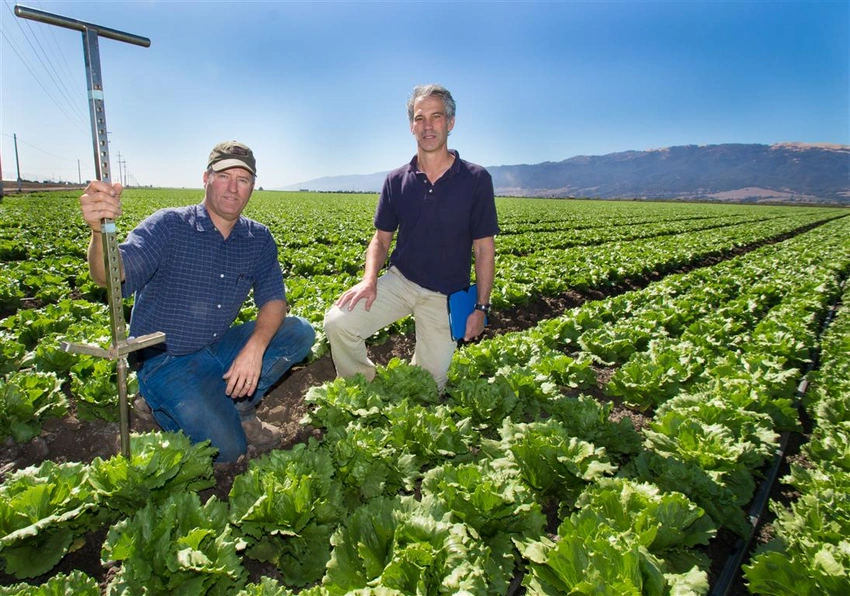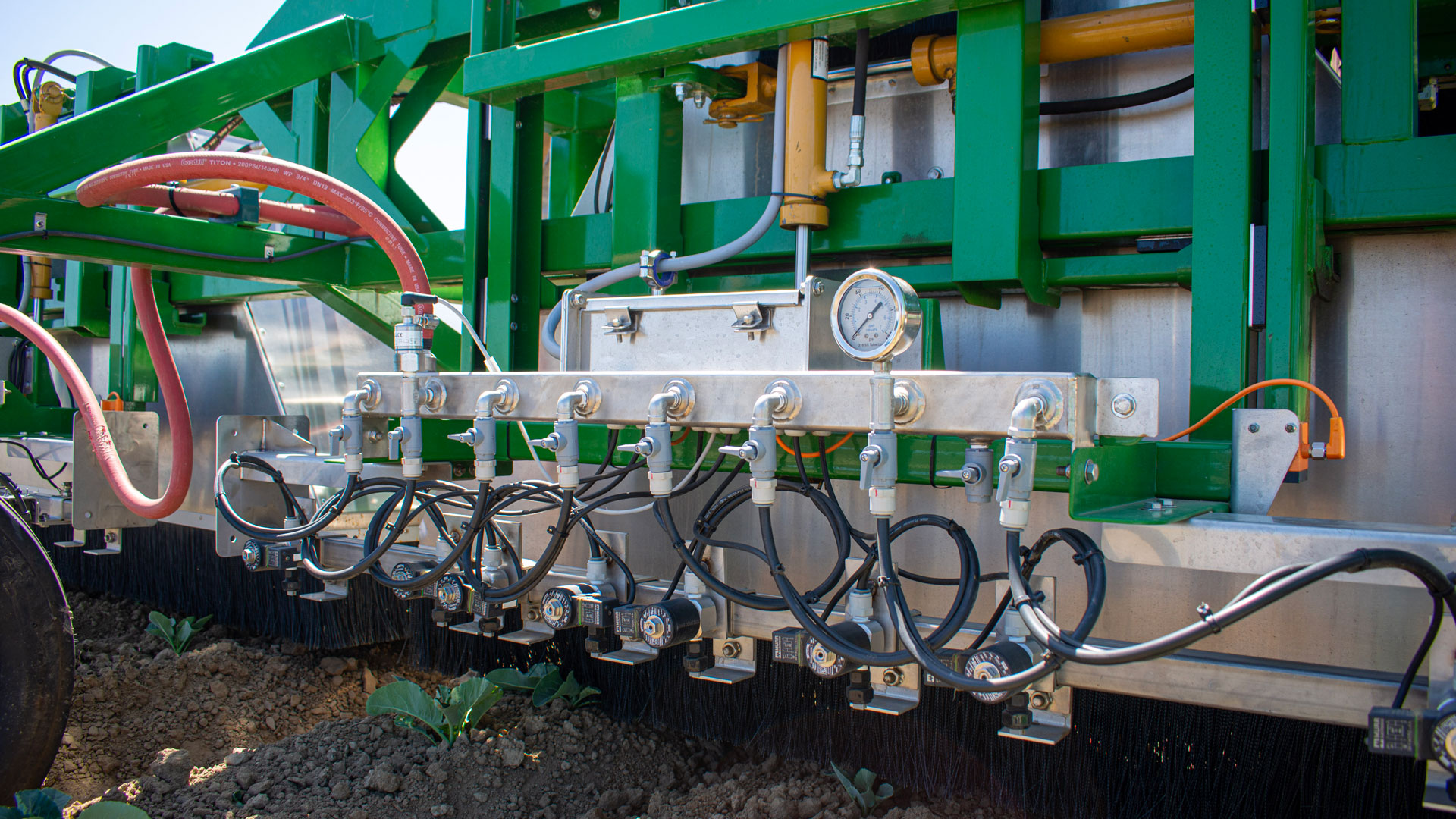In the Field: Solving big problems with Mantis machines
Huntington Farms solves big problems with smart machines
In the early 2010s, Mark Mason wasn’t yet facing the labor shortage that would materialize a few years later. But he saw the writing on the wall. It was one of a few problems he knew he’d have to solve.
So the Huntington Farms manager looked into his crystal ball — one he says is often a little on the foggy side — and sought a way to augment the labor necessary to raise head and leaf lettuce, cauliflower, celery, and broccoli on the 4,500-acre integrated farm that stretches from the Salinas Valley to Yuma, Arizona. At the same time, he knew tightening regulations on chemical and fertilizer applications and rising product and application costs would continue to challenge the operation. He knew he needed reliable, scalable solutions.

Why Mantis was that solution
That’s when Mason got connected with the Mantis team. He had heard they were developing some game-changing technology to thin and spray the crops Huntington produced. Spraying is a major management focus for Mason and his team. Effective applications are often the difference between a successful lettuce stand and a crop failure. Once he and his team met with Mantis Director of Technology Development Jared Johnson, he saw potential in the Smart Sprayer as a tool that could address some of his issues.
“There’s a fear of technology in some organizations. What if it sprays the wrong plants? That’s the fear we have dealt with in the past,” Mason said. “When we first started using Mantis machines, we saw it as a way to stay ahead of the curve. So we got the machines out while we still have labor to help enable the adoption of technology.”
Apprehensive at first, Mason and Johnson led a team who focused on validation and testing the Smart Sprayer in production fields. When the farm manager saw early results, his confidence bloomed quickly.
“With the Smart Sprayer, you’re spot-spraying, not applying a continuous band. When you add up all that ground you’re not spraying, it reduces chemicals by 90%. People don’t believe it at first, but it’s true. Whatever technology can reduce our resources — water, pesticide, fertilizer, labor and everything else — without a loss of yield or quality, it really is the fulfillment of the old cliché of doing more with less.”

What it takes to make Mantis work
Reaching that outcome was no simple equation for Mason and Johnson at first. The Smart Sprayer’s effectiveness in Mason’s case depended on a combination of management steps. Correct soil preparation, planting and germination were critical enablers of deploying the Smart Sprayer. Given the laundry list of pest and disease targets to manage, Mason applied a total program approach to integrate the chemistry, agronomy and automated equipment to accomplish his goals. In the end, it was a success, and it worked with just a fraction of the manual labor conventional applications would have required.
“I told Jared I would give him one field a week until we became comfortable with it. Just to make sure we didn’t have any pest outbreaks. When we didn’t, I felt confident in the Smart Sprayer,” Mason said. “But Jared and I rode on the back of the machine a lot to make sure there was consistent performance. After we did that and watched it work, I was confident and ready to go.”
What’s next for Huntington Farms and Mantis
The Smart Sprayer is now fully integrated into Huntington Farms’ vegetable production process. As he reflects on integrating it into operations, Mason said it’s helped solve the problems he had in initially contacting Johnson and the Mantis team to solve. But like any tool in his operation’s toolbelt, it isn’t a cure-all. Its effectiveness depends on its smart use and attention to detail with all growing conditions.
“You’ve got to be a better farmer with soil preparation, planting, seed singulation, germination, and everything else to reach the point where the Mantis machines can spray and thin your crops,” Mason said. “We can’t expect technology to come in and solve all of our problems, but if we’re responsible stewards of our land and crops, we can realize all the benefits of these smart machines.”
Looking ahead, Mason doesn’t see a lot of change in his day-to-day duties at Huntington Farms because of the Mantis machines. But the land, crops it supports and how they’re raised will.
“I think we’ll be more efficient and have fewer inputs that go into producing a crop. We’ll continue to apply 90% less chemical everywhere we can,” he said. “I think the future of California agriculture is going to ultimately be one with little or no conventional pesticides. I see that writing on the wall now, and with Mantis, we’ll be ready.”